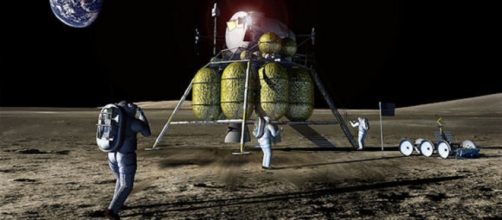The sharp-eyed Eric Berger at Ars Technica noticed that William H. Gerstenmaier, NASA’s head of human space flight, has admitted that the space agency does not have enough funding to land on Mars, not in the 2030s and likely not ever at the currently projected funding levels. NASA is now stating what many space observers have noted ever since the Journey To Mars started. The space agency is spending all of the available money on the Orion deep space vessel and the Space Launch System heavy-lift launcher, with noting left over for landers, surface habitats or interplanetary propulsion technology.
Some, like Berger, are pretty sure that the culprit is the SLS, an expendable rocket that is expensive to build and to fly. Others, like this writer, as he noted in the Hill newspaper, believe that the Journey to Mars was a fraud, to begin with. The question arises, presuming that the United States really wants to explore space, what to do now? The following ideas are not mutually exclusive.
Spend the money
The simplest solution is if not enough money is available to go to Mars, start spending the money. The House has already marked up an appropriations bill that funds NASA at almost $20 billion for the 2018 fiscal year. Raising the space agency to – say -- $23 billion or $25 billion would be a rounding error but would also cover the extra expense for the rest of the Mars architecture.
Go commercial
Many space advocates believe that the Orion and the SLS should be scrapped and that interplanetary exploration should be outsourced to companies like SpaceX and Blue Origin. That proposal is likely not very realistic, for both political and practical reasons. However, a mixed NASA and commercial architecture is certainly a possibility. Indeed, a hearing before Sen. Ted Cruz’s Senate subcommittee that oversees NASA raised the idea of a deep space version of the Commercial Orbital Transportation System (COTS) program with the goal of developing commercial lunar and Mars landers. The idea has been bandied about before and would fit right into the Trump administration’s commercial space push.
Go back to the moon first
The third option is to try to do something less challenging and expensive than Mars first, such as returning to the moon. Vice President Mike Pence has announced that particular goal anyway. Also, lunar water could be refined into rocket fuel which would turn the moon into a refueling station. That arrangement would eliminate the need to carry all the fuel for a trip to Mars from Earth, making the Journey to Mars easier and less expensive.


